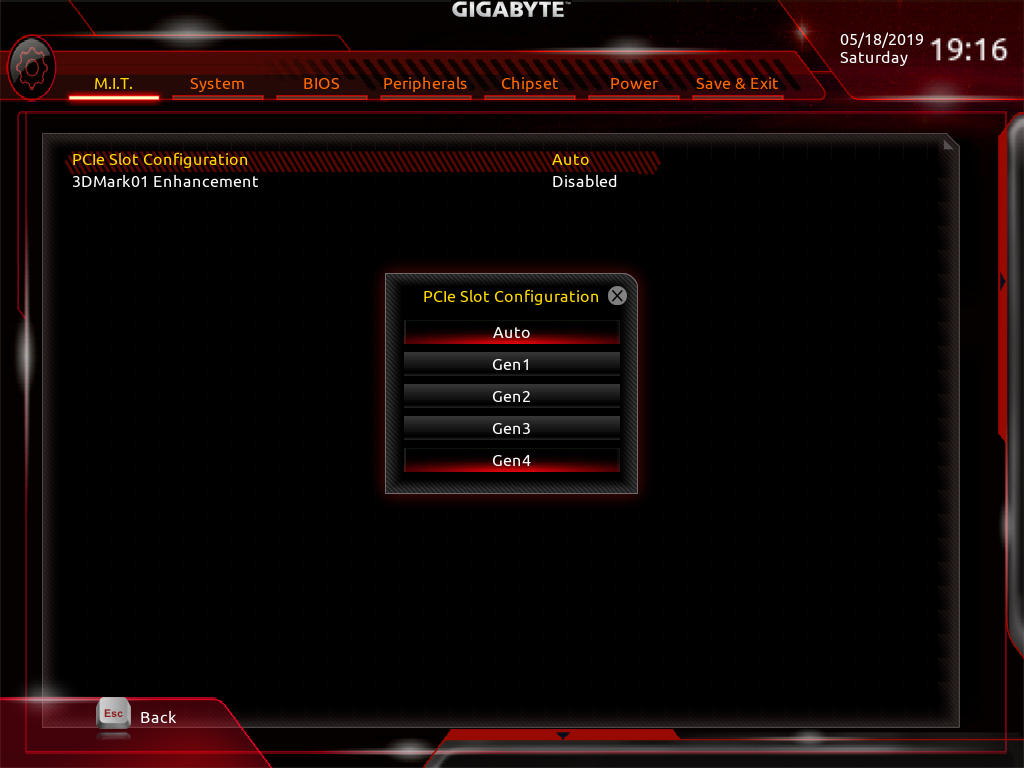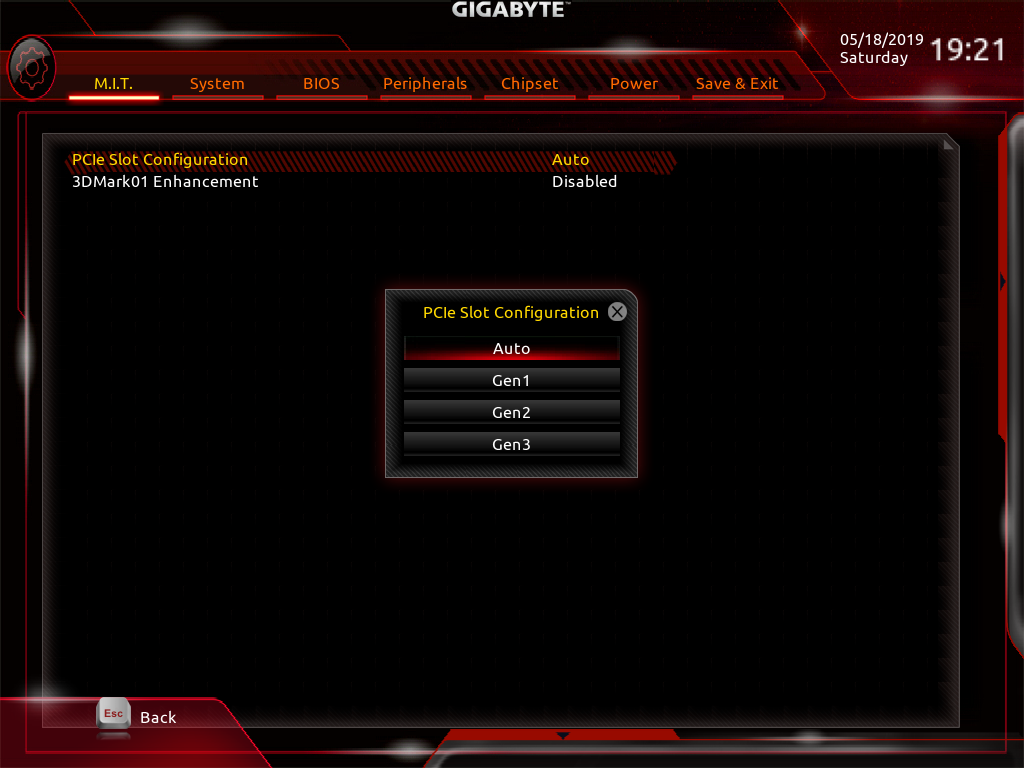Gigabyte Enables PCIe 4.0 on X470 and B450 Motherboards (Updated)
EDIT 5/19/19 7:30am PT: We confirmed that a PCIe 4.0 option is available on X470, but reports have surfaced that the option is also available for the budget-oriented B450 motherboards.
Original Story:
Over the last few weeks, motherboard makers have released a steady stream of BIOS updates to support AMD's Ryzen 3000 processors, but Gigabyte's newest BIOS has a special feature: The company has enabled the option for PCIe 4.0 in the BIOS of its X470 Aorus Gaming Wi-Fi 7 motherboard. That signals that, under some circumstances, the company will likely support PCIe 4.0 on existing motherboards if you drop in a new Ryzen 3000 processor.
An alert redditor noticed the new setting in Gigabyte's F40 BIOS, and our motherboard team verified that this option now appears in the Gigabyte BIOS under the PCIe Slot Configuration submenu.
Our team also verified the setting isn't available with the previous F3c revision of the BIOS.
Gigabyte hasn't officially announced PCIe 4.0 support for its 300- and 400-Series motherboards, so it is unclear which models would support the faster interface, or if there will be limitations. It should go without saying, but you would also need a processor that supports PCIe 4.0 to unlock the faster transfer speeds, so current-gen Ryzen CPUs will still operate at PCIe 3.0 speeds.
AMD will also support PCIe 4.0 with its next-gen 500-series motherboards, ushering in a new wave of powerful devices like faster SSDs, but as part of AMD's standard promise of backward compatibility for AM4-Socket processors, these new 7nm processors will also drop into the existing X370, X470, B350 and B450 motherboards that are already on the market. (Support for A-series motherboards is still curiously up in the air).
Get Tom's Hardware's best news and in-depth reviews, straight to your inbox.
We've known for some time that, under some conditions, existing PCIe 3.0 motherboards can support the faster signaling rates of the PCIe 4.0 specification, but AMD's motherboard partners have not explicitly announced that the feature would come to existing models.
At CES 2019, AMD confirmed to Tom's Hardware that 300- and 400-series AM4 motherboards could support PCIe 4.0. AMD will not lock the out feature; instead, it will be up to motherboard vendors to validate and qualify the faster standard on their motherboards on a case-by-case basis. Motherboard vendors that do support the feature will enable it through BIOS updates, but those updates will come at the discretion of the vendor. AMD also cautioned that most motherboard vendors might not bother supporting the faster interface on existing motherboards.
In either case, on existing motherboards, support could be limited to certain slots based upon board, switch, and mux layouts, and any trace routing on the motherboard that exceeds six inches would require newer redrivers and retimers that support PCIe 4.0's faster signaling rates. That means some older motherboards could supply a PCIe 4.0 x16 connection to the first slot on the motherboard, but the remainder of the slots would revert to PCIe 3.0 signaling rates. Any PCIe slots with an attached PCIe 3.0 switch would also be excluded from supporting the faster speeds, so some of the fancier motherboards with elaborate PCIe routing setups will not be eligible. All PCIe lanes that hang off the PCH will also remain at PCIe 3.0 speeds.
That means that we might see some complicated support matrixes appear to outline which previous-gen AM4 motherboards, and which slots, will support PCIe 4.0 when used in conjunction with a Ryzen 3000-Series processor.
But the larger story is that it appears support will come in some fashion, which is quite the bonus upgrade path for enthusiasts with Ryzen-powered systems. Meanwhile, we aren't sure of a firm arrival date for PCIe 4.0 for Intel's chips, and given the chipmaker's proclivity for frequently introducing new sockets, that support likely won't come to existing motherboards.
We've pinged Gigabyte for more details and will update as we learn more.

Paul Alcorn is the Editor-in-Chief for Tom's Hardware US. He also writes news and reviews on CPUs, storage, and enterprise hardware.
-
NightHawkRMX I hope this doesn't mean there is an issue with X570. Doubtful tho since they are going to announce soon.Reply
I actually think we will benefit from PCI-E 4.0 later on, however, most current devices won't benefit from it. I do think this slightly adds to Ryzens ever strong value since you can buy a potentially cheaper X470 board and get Ryzen 3000 support and PCI-E 4.0. -
razor512 I wish they would make the mainstream CPUs offer more PCI express lanes. What is sad is that they are providing boards with multiple m.2slots but all of them require some compromise to use.Reply
Soma boards will take a few lanes from the CPU, thus forcing your video card to run at X8 speed, while others may run off of the chipset, but share the equivalent of an X4 link with the X1 slots, as well as the sound card, USB ports, Ethernet ports, and SATA ports, thus any activity on any of those devices, directly reduces the throughput of your NVMe SSD (e.g., if you have a 970 pro, and play an mp3 from a different drive, you will notice that the soundcard will directly lower the throughput. same with the Ethernet port, or a SATA port.
With that in mind, they need to start offering at least 24 PCI express lanes so that a basic setup of a decent NVMe SSD, a few hard drives on the SATA ports, a PCI-E GPU, and probably 1 or 2 PCI-E X1 devices, all without having to deal with performance being crippled. -
hannibal The price, the price and segmentation. More lines means more complex motherboard. Also They make pro models more appealing because those offers more lines and They can ask more money from pro models. Same as with normal vs professional GPUs.Reply -
NightHawkRMX With pcie 4.0, even if there is not extra pcie lanes, you are unlikely to run into bandwidth limits even if some devices can only use a few lanes.Reply -
drea.drechsler Reply
I thought that was the impetus behind the X570 chipset. It will provide more high-speed (gen4) PCIe lanes for M.2 devices and PCIe slots. When it comes available it will slot in nicely to make a top-end, premium, AM4 motherboard.razor512 said:I wish they would make the mainstream CPUs offer more PCI express lanes. What is sad is that they are providing boards with multiple m.2slots but all of them require some compromise to use.
.... -
mattkiss "All PCIe lanes that hang off the PCH will also remain at PCIe 3.0 speeds."Reply
Currently X470 and X370 boards are limited to PCIe 2.0 speeds on the PCIe lanes supplied by the PCH. -
razor512 I just feel that compromises like this should not be present on the mainstream motherboards.Reply
I can understand limits like that for something entry level, (e.g., your basic $60 ATX motherboard running an entry level CPU), but if you are at a core i5 or i7, or the AMD equivalent, tradeoffs like this should not be required.
For example, a user cannot have a setup of an NVMe SSD, 6 hard drives, a PCI-E X1 sound card, PCI-E X16 video card, and then upgrade to a 10GbE adapter (Asus XG-C100C) because the X4 slot is disabled when the m.2 slot is in use.
Then there is the issue of the shared bandwidth. If you have a PCI-E soundcard installed, along with a Samsung 970 pro running through the chipset, then doing as little as generating a tone while using ASIO on the soundcard, will cause the 970 pro to drop from around 3500MB/s reads, to around 3000MB/s reads.
They pretty much force you to go to a workstation class board and CPU to not cripple basic configurations.
As for the X570, I can't seem to fine any info in the PCI express lanes when it comes to bandwidth sharing and what ports get disabled. -
epobirs This will be far more useful for hardware developers than end users. By the time PCIe 4.0 products are desirable items for mainstream use, we'll have been through enough generations that anybody looking to host such a device will want a more up to date machine in which to do it. Where PCIe 4.0 gets interesting for many will be getting more done with the fewer lanes on affordable boards. Such as M.2 SSDs using just two lanes to perform comparably to current x4 devices. We'll also need those lanes for when USB 4.0 makes Thunderbolt For Everybody attainable.Reply -
Gillerer Replyrazor512 said:I just feel that compromises like this should not be present on the mainstream motherboards.
Your post is confusing; you don't state what product (or chipset) you're referring to - or even if it's Intel or AMD. Where did the images come from? The motherboard mentioned in the article (X470 Aorus Gaming Wi-Fi 7) doesn't have such M.2 slots - it uses designations M2A and M2B.
And you can't get info on X570 PCI Express lanes, since the products haven't been launched yet - all we have are advance teasers. -
razor512 I was mainly pointing out something I have seen in common across the current gen mainstream AMD and Intel platforms. The example I posted was from an X470 board, though similar limitations can be found on Z390 boards. It just doesn't seem like any of these companies are giving much attention to PCI-E lanes.Reply


